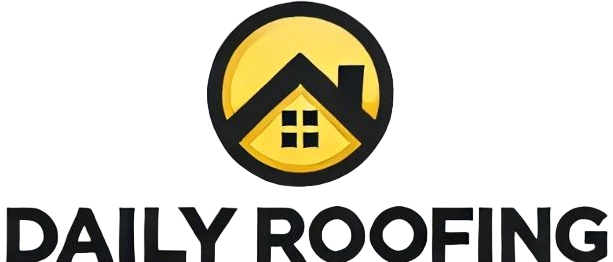How to Install Metal Roofing Step by Step
Installing Roofing Ridge Caps
After successfully laying down the metal roofing panels, the next crucial step in the installation process is securing the roofing ridge caps along the peak of the roof. Ridge caps play a vital role in providing additional weather protection to the roof, preventing water infiltration, and enhancing the overall appearance of the roof. To secure the ridge caps in place, it is essential to follow the manufacturer’s instructions carefully and use appropriate fasteners to ensure a secure attachment.
When securing the ridge caps, make sure to place them evenly along the peak of the roof and align them properly for a neat and professional finish. Secure the ridge caps tightly but be cautious not to overtighten the fasteners, as this could lead to damage or deformation of the materials. Additionally, consider using roofing sealant along the edges of the ridge caps to provide an extra layer of protection against water penetration. By carefully installing and sealing the ridge caps, you are taking a crucial step towards ensuring the longevity and durability of your metal roof.
Secure the ridge caps along the peak of the roof for added weather protection
After positioning the ridge caps along the peak of the roof, the next crucial step is to secure them adequately. This is a vital part of the installation process as it provides added weather protection to the roof. Using appropriate screws or nails, fasten the ridge caps firmly in place. Ensure that they are aligned correctly and sit flush with the roof surface to prevent any gaps where water or debris can penetrate.
Properly securing the ridge caps helps to maintain the integrity of the roof and prevents potential damage from harsh weather conditions. Take the time to double-check each fastener to guarantee a secure fit. Additionally, applying a bead of sealant along the edges of the ridge caps can further enhance protection against moisture infiltration. By following these steps diligently, you can ensure that your metal roof is not only visually appealing but also built to withstand the elements for years to come.
Inspecting and Sealing Joints
During the installation process of a metal roof, it is crucial to carefully inspect and seal all joints to ensure a watertight and secure finish. Begin by closely examining the roof for any gaps or loose fasteners that may compromise the roofing system’s integrity. Even the smallest opening can lead to water infiltration and potential damage to the structure below. Once you have identified any areas that require attention, use an appropriate sealant to firmly seal all joints and connections. This step is essential in preventing leaks and enhancing the overall durability of your metal roof.
Inspecting and sealing joints is a task that should not be rushed, as thoroughness is key to a successful installation. Take the time to go over each joint methodically, ensuring that every seam is tightly sealed. Depending on the type of metal roofing system you have chosen, there may be specific recommendations for the sealant to use. Following manufacturer guidelines and best practices will help guarantee a long-lasting and weather-resistant metal roof. By diligently inspecting and sealing joints, you are not only safeguarding your investment but also contributing to the longevity and performance of your roof for years to come.
Check for any gaps or loose fasteners, and seal all joints with appropriate sealant
Check for any gaps or loose fasteners before proceeding to seal all joints with appropriate sealant. Inspecting the metal roofing for any potential gaps or loose fasteners is crucial to ensure the integrity of the installation. Gaps can lead to water leakage and compromise the effectiveness of the roof, while loose fasteners can result in the metal panels becoming loose and potentially dislodging during severe weather conditions.
Once you have thoroughly checked for any gaps or loose fasteners, it is time to seal all joints with the appropriate sealant. Using the right sealant is essential to create a watertight seal and prevent any potential issues in the future. Apply the sealant generously along all joints, paying close attention to areas where two metal panels meet or where flashing is installed. Properly sealing all joints will enhance the durability and longevity of your metal roof, providing additional protection against the elements.
Completing the Finishing Touches
Trim any excess material that may be sticking out from the newly installed metal roof. This step ensures a clean and polished appearance for your roofing project. Additionally, take the time to clean up the work area, removing any leftover debris or tools to create a safe and clear space around your roof.
Lastly, don’t forget to conduct a final inspection of the metal roof after completing the finishing touches. Inspect all areas of the roof to ensure everything is secure and properly installed. Make any necessary adjustments or fixes to guarantee that your metal roof is in top condition and ready to withstand various weather conditions for years to come.
Trim any excess material, clean up the work area, and inspect the newly installed metal roof
After trimming any excess material from the newly installed metal roof, the next step is to thoroughly clean up the work area. It is important to remove any debris, leftover materials, and tools that may have been used during the installation process. A clean work area not only improves the aesthetics of the space but also ensures safety by reducing potential hazards.
Once the work area is tidied up, the final task is to inspect the newly installed metal roof. Take a close look at the entire roof surface to check for any visible imperfections, loose panels, or areas that may require additional sealant. This step is crucial in ensuring that the metal roof is securely installed and that it will provide long-lasting protection for your property.
Conducting a PostInstallation Inspection
After finishing the installation process of a metal roof, it is crucial to conduct a thorough post-installation inspection to ensure everything is correctly in place. Begin by verifying that the metal roof is securely installed along all edges and ridges. Check for any visible gaps, loose fasteners, or areas that may need additional sealing. It is essential to make any necessary adjustments promptly to prevent potential issues such as leaks or damage in the future.
Next, inspect the overall appearance of the newly installed metal roof. Look for any signs of damage, dents, or scratches that may have occurred during the installation process. Ensure that all the finishing touches have been completed, such as trimming any excess material and cleaning up the work area. By conducting a detailed post-installation inspection, you can address any potential issues early on and ensure the longevity and durability of your metal roof.
Verify that the metal roof is securely installed and make any necessary adjustments
Once the metal roofing installation process is complete, it is crucial to verify that the roof is securely installed to ensure its longevity and effectiveness in protecting the structure underneath. Begin by conducting a thorough inspection of the roof to check for any loose fasteners, gaps, or other irregularities that may compromise the roof’s integrity. Pay close attention to areas such as seams, edges, and flashing to ensure that everything is properly secured and sealed.
After inspecting the roof for any issues, make any necessary adjustments to address the problems identified during the inspection. This may involve tightening loose fasteners, filling gaps with appropriate sealant, or making modifications to ensure that the roof is securely in place. By taking the time to conduct a post-installation inspection and making any required adjustments, you can rest assured that your metal roof will provide long-lasting protection for your home or building.
FAQS
What is the first step in installing metal roofing?
The first step in installing metal roofing is to secure the ridge caps along the peak of the roof for added weather protection.
How can I ensure the joints of the metal roofing are properly sealed?
To ensure the joints of the metal roofing are properly sealed, check for any gaps or loose fasteners and seal all joints with appropriate sealant.
What should I do after completing the installation of the metal roof?
After completing the installation of the metal roof, trim any excess material, clean up the work area, and inspect the newly installed metal roof for any issues.
Why is it important to conduct a post-installation inspection of the metal roof?
It is important to conduct a post-installation inspection of the metal roof to verify that it is securely installed and to make any necessary adjustments to ensure its longevity and performance.
Can I install metal roofing on my own, or should I hire a professional?
While it is possible to install metal roofing on your own, it is recommended to hire a professional to ensure the job is done correctly and to avoid any potential issues in the future.







